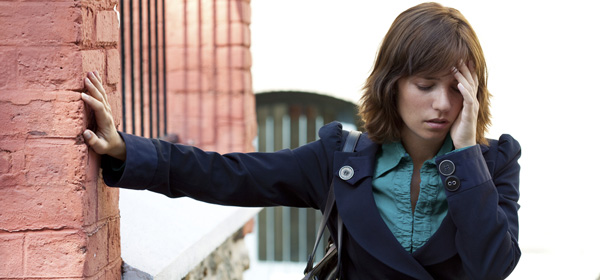Do you suffer from frequent dizzy spells? Are you increasingly unsteady on your feet? You may have vertigo, a false sensation of movement that affects more than 40 per cent of people over the age of 40. Vertigo is rarely permanent and the more you know about it, the better you can get your balance back. Here is everything you need to know about this frustrating inner ear condition.
1. There are two types of vertigo
Vertigo is caused by either an inner problem (around 60 per cent of cases) or a brain problem. Peripheral vertigo relates to inner ear problems and can also involve the vestibular nerve, which connects the inner ear to the brain stem. Central vertigo relates to the brain problem and is usually in the brain stem or the cerebellum, which is the part of the brain that controls balance.
2. Some people are more prone to vertigo than others
The connection between the inner ear and the brain gets less efficient as we get older. This means that you become more prone to vertigo as you age. Age isn’t the only factor, though. Some people are more visually dependant than others, meaning they might not feel the motion they are able to see. People that suffer from motion sickness fall into this category, and are more likely to suffer from vertigo as a result.
3. Migraines can cause vertigo
As if a pounding headache that will not let up is not bad enough, it can also bring about sustained spells of vertigo. Vestibular migraines can last anywhere from a few minutes up to a few hours in some cases and may involve light and noise sensitivity. Around one in 10 people who suffer from migraines also suffer from bouts of vertigo as one of their symptoms.
4. Physical therapy can treat some vertigo
The most common form of vertigo is benign paroxysmal positional vertigo (BPPV). BPPV is usually triggered by specific changes in the position of your head. This might occur when you tip your head up or down, when you lie down, or when you turn over or sit up in bed. Our inner-ear organs contain crystals (called otoconia) that move when we do. Sometimes these crystals break down and dislodge from the inner ear and float in the fluid of the inner ear, messing with the ear’s rotation senses when you move. If this is the cause of your vertigo, your doctor or a physiotherapist may be able to help. By manoeuvring and positioning the head it is possible to move particles from one part of the fluid in the inner ear to an open area where they are more easily absorbed and do not cause any trouble.
5. There is no way to prevent vertigo
Vertigo can strike without warning and for no apparent reason. There are a few activities that increase your likelihood of suffering from vertigo, including yoga and pilates, or any activity where your head may be extended for a period of time. You can also try steering clear of jerking head motions that can knock crystals loose in your inner ear, but even then, you cannot stop every instinctive head movement. There are medications available that will help with some cases of vertigo or otherwise you may be able to engage some physical therapy as mentioned above. If your vertigo strikes when you are getting out of bed or standing from a sitting position, it is best to wait a few seconds before you attempt walking to try and let your system regain its balance.
Related articles:
Dealing with dizziness
Dizzy spells linked to dementia
Overcoming seasickness

